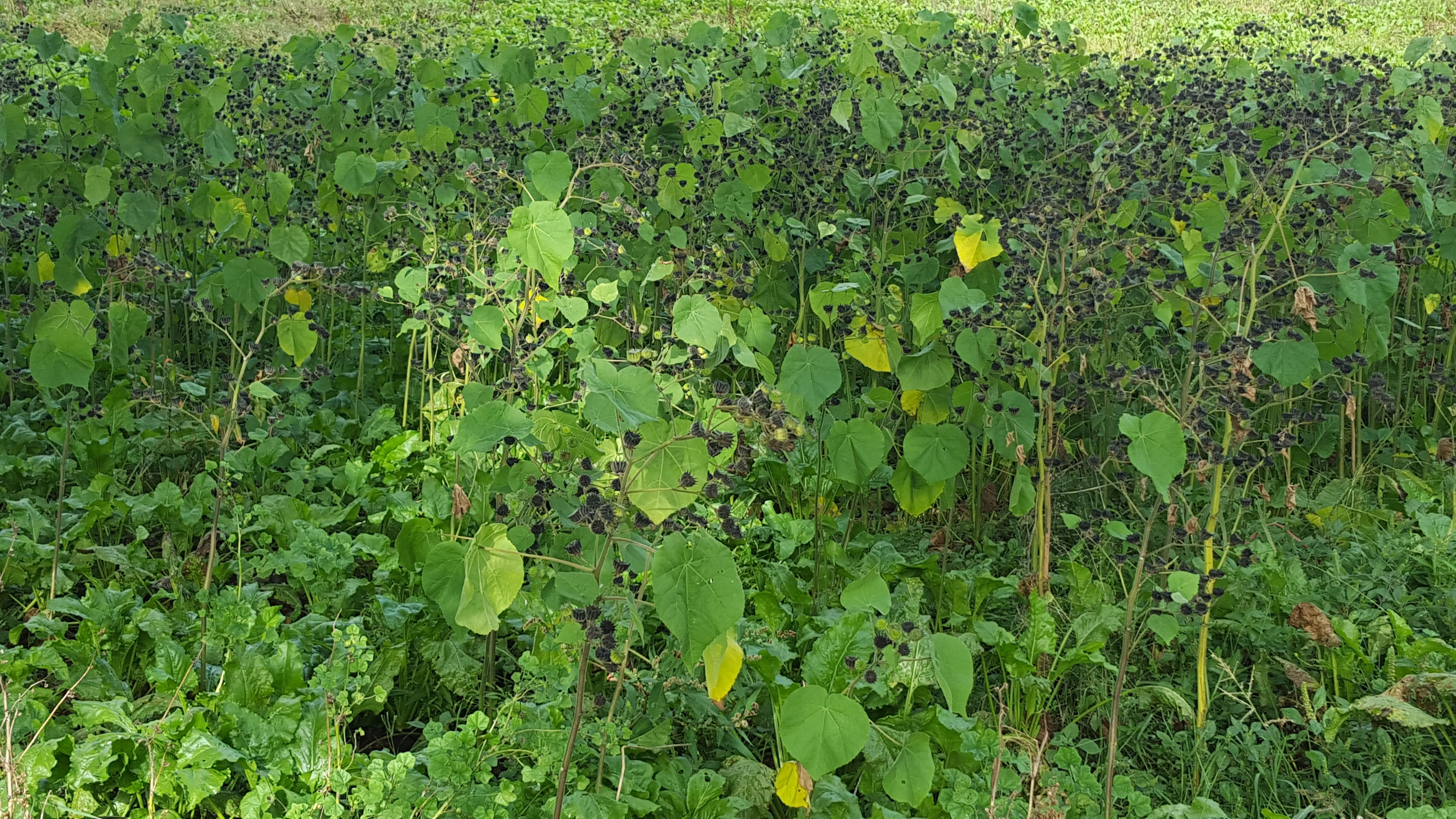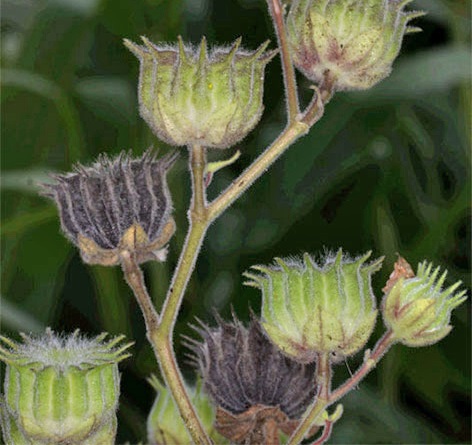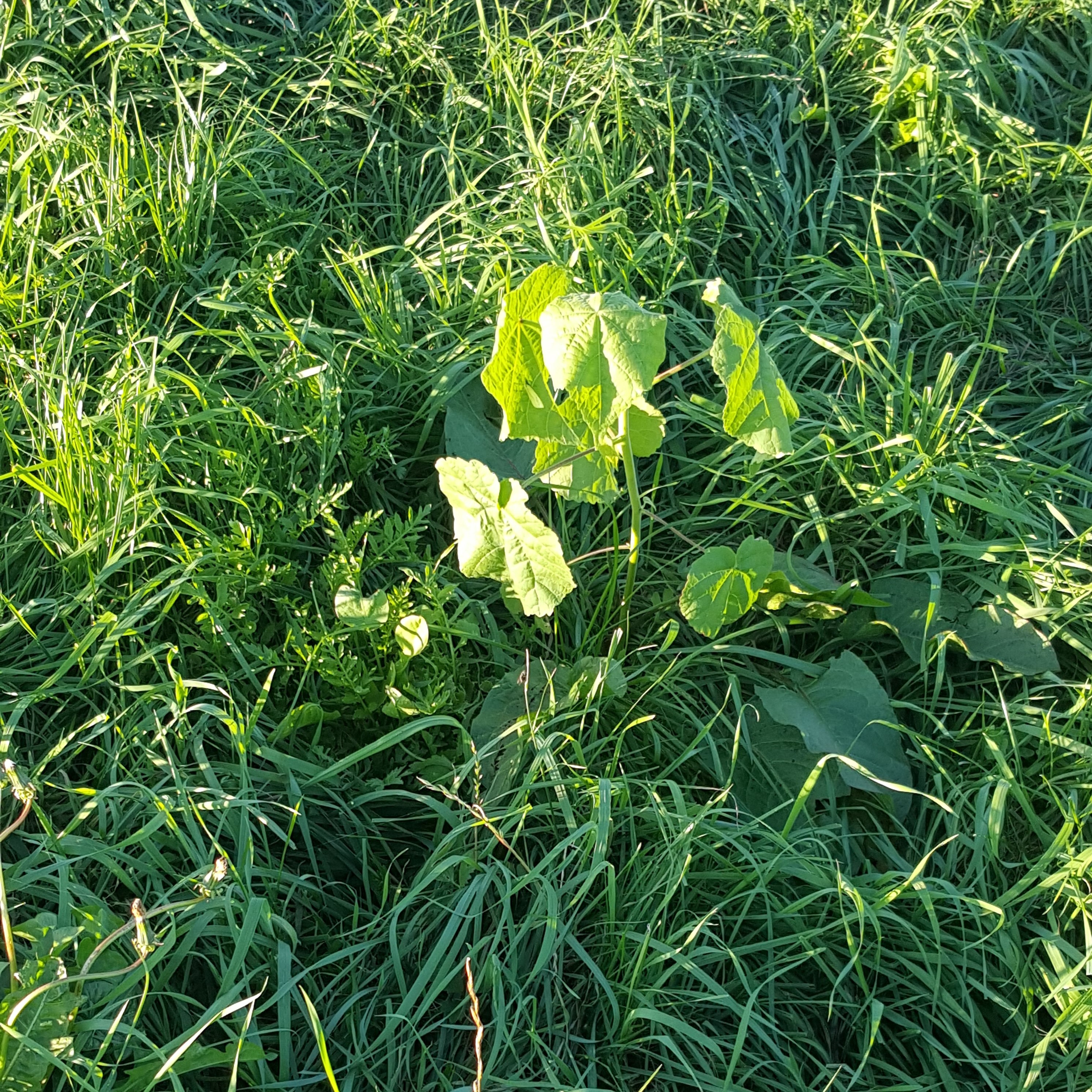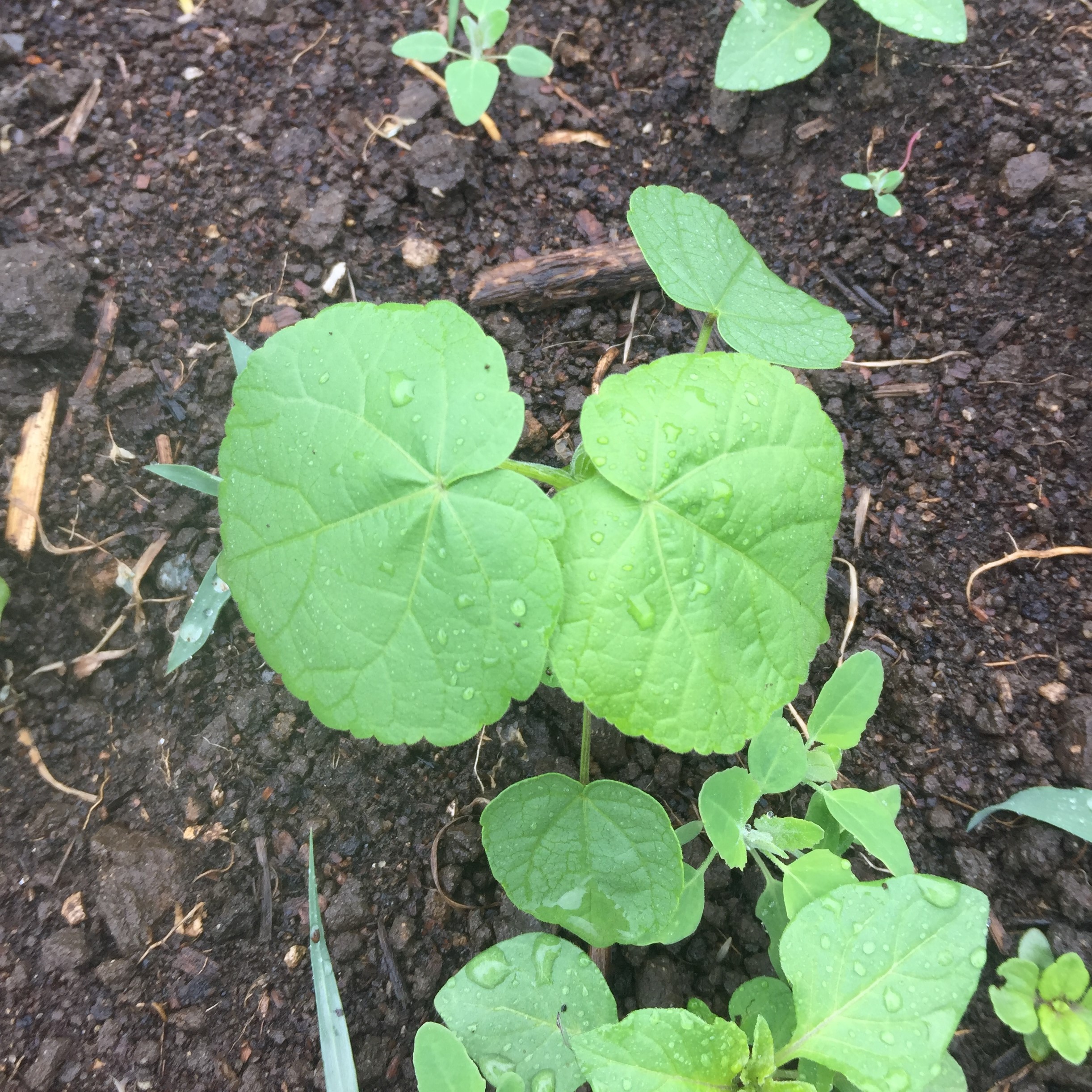Overview

A velvetleaf plant.
Velvetleaf (Abutilon theophrasti) is present on a number of properties throughout New Zealand.
It's a serious cropping weed that can affect many arable crops.
Velvetleaf has been reported as causing up to 70% reduction in crop yields overseas.
We're working to increase public knowledge on how to effectively manage velvetleaf and prevent its spread.
We're also supporting land occupiers and rural contractors to take personal responsibility for controlling velvetleaf and reducing the risk of spread.
Why velvetleaf is such a big problem for farms
Velvetleaf is difficult to control – it's resistant to many herbicides, and normal weed management practices don't work at controlling it. It keeps emerging over summer and autumn, and its seeds can survive for up to 50 years. Seeds can lie dormant in soil and then germinate years later. This often happens in response to cultivation and movement of soil. A single plant can drop up to 33,000 seeds.

A velvetleaf patch left to seed for 3 years. Photo credit: Trevor James, AgResearch
How to identify velvetleaf
Velvetleaf is an annual broad-leaved weed that grows between 0.5m and 2.5m tall.
- It has buttery-yellow flowers about 3cm across. It flowers from spring through autumn.
- Leaves are large and heart-shaped and are velvety to the touch.
- The plant has distinctive seedpods with 12 to 15 segments in a cup-like ring. Each seedpod is about 2.5cm in diameter.


What velvetleaf looks like in the early stages
- Velvetleaf seeds will often stay dormant in the soil for years if left undisturbed.
- Keep a look out for young plants such as these after cultivation, or other events that disturb the soil like earthworks.


What to do if you find it
Farmers can protect their property from velvetleaf. We want people to take action to control it on farms, and to stop it spreading between farms.
Report it
Report it so that we know about it. Take a photo of it and call us on our pest and disease hotline (0800 80 99 66). The photo will help us identify it. If you do have velvetleaf, then we can help you develop a plan to manage it. This is important so that we can understand how velvetleaf is behaving in New Zealand, and so that we can provide you with support to manage the weed.
Control it
Find out what you can do to control velvetleaf
Where is it?
The weed is on a number of properties across the country and could be in any crop. Canterbury, Otago, and Southland have the most affected properties. There is also velvetleaf in areas around Auckland and the Waikato. This incursion is associated with maize production. It has been spreading in these areas via dirty maize harvesters and contaminated maize silage.
How did it get here?
The main entry pathway was through imported fodder beet seeds that were contaminated. We have a list of seed lines that we know are contaminated on this page. We do not know what the entry pathway was for the earlier incursion associated with maize growing in Auckland and Waikato. This incursion seems to have happened more than 15 years ago, and we may never find out how it arrived.
If you're a farmer (and especially if you sowed fodder beet seed in 2015), you should check your property carefully. If you find velvetleaf, you can use the information on this page to help you remove it and dispose of it. We ideally need to remove velvetleaf before it goes to seed.
Affected fodder beet seed lines
When velvetleaf was first found in the South Island in early 2016, we tested a range of imported fodder beet seed lines for velvetleaf contamination.
We only found velvetleaf seed in seed lines sourced from Italy. The imported seed was certified as meeting our biosecurity requirements by Danish authorities.
Fodder beet lines that have tested positive for velvetleaf contamination are:
- Kyros DNK-16UB128
- Bangor DNK-15UB079
- Bangor DNK-16UB126
- Bangor DNK-16UB114
- Feldherr DNK-16UB131
- Troya DNK-16UB112
However, this list is not exhaustive. There may be other contaminated lines. Farmers who planted fodder beet need to be careful and keep an eye out.
As soon as we found out about the contaminated lines, we reviewed and strengthened our importing requirements for pelletised seed.
All seed lines that test positive for velvetleaf are not cleared for entry into New Zealand. Any of these lines that arrive here are either turned away from New Zealand or destroyed.
What's being done?
We're continuing to work with partner organisations to manage velvetleaf. This is done through the Velvetleaf Programme – it's a partnership aimed at containing velvetleaf and reducing its impact over time. It includes MPI, regional councils and industry groups (like Federated Farmers, Rural Contractors New Zealand, the Foundation for Arable Research, Beef + Lamb New Zealand, and DairyNZ).
In particular, we have worked with farmers who planted risk seed, to help develop management plans for those properties. The aim is to find the weed, contain it, and safely remove it. We've also used detector dogs to help locate it.
Supporting farmers through community outreach
There are people in community outreach – their roles involve supporting farmers and helping them to manage velvetleaf on their land.
North Island
Sally Linton: Email sally.linton.nz@gmail.com
South Island
Ash Mills: Phone 03 345 5783 or email ashley.mills@far.org.nz
Working with researchers
We're working with researchers to understand how to better control velvetleaf and stop it spreading. This research includes herbicide trials, experimenting with methods to promote germination of seeds, and other control methods.
Who to contact
If you're finding it stressful dealing with velvetleaf, we encourage you to call Rural Support Trust (0800 787 254) for a free, confidential chat.
If you have questions about velvetleaf, contact your local community outreach person, or email info@mpi.govt.nz








